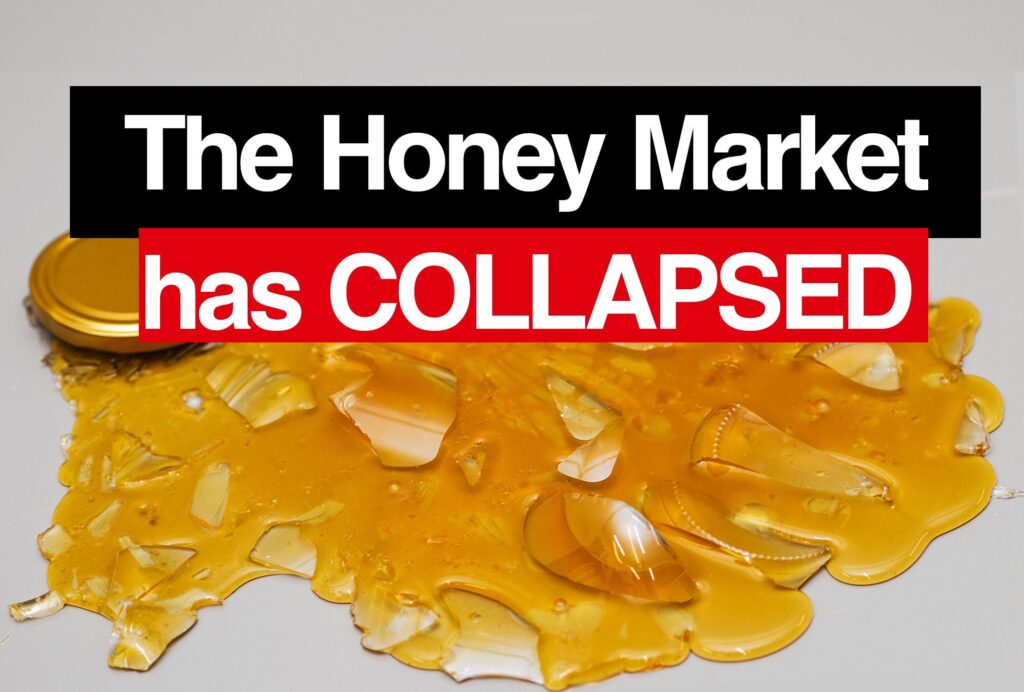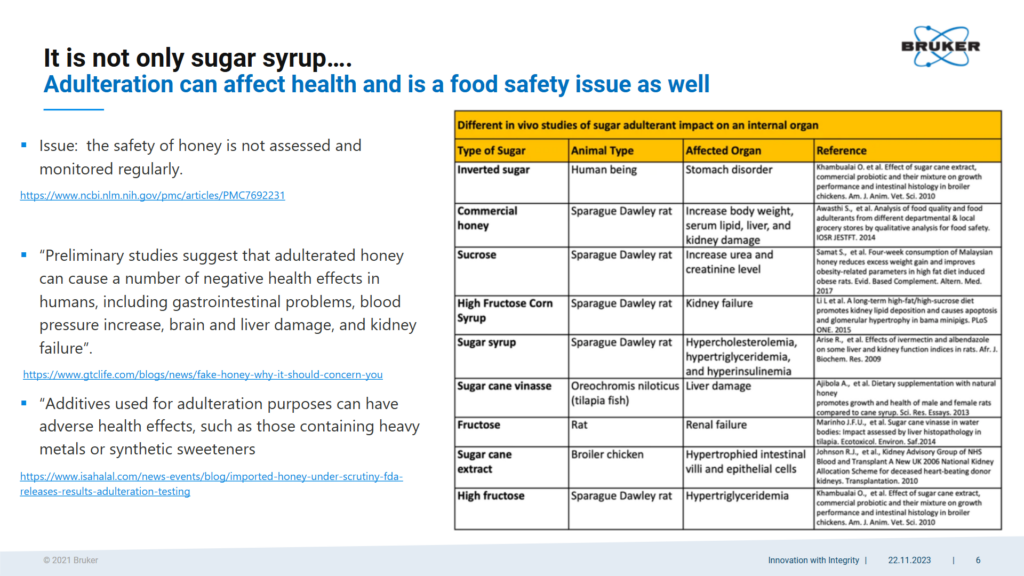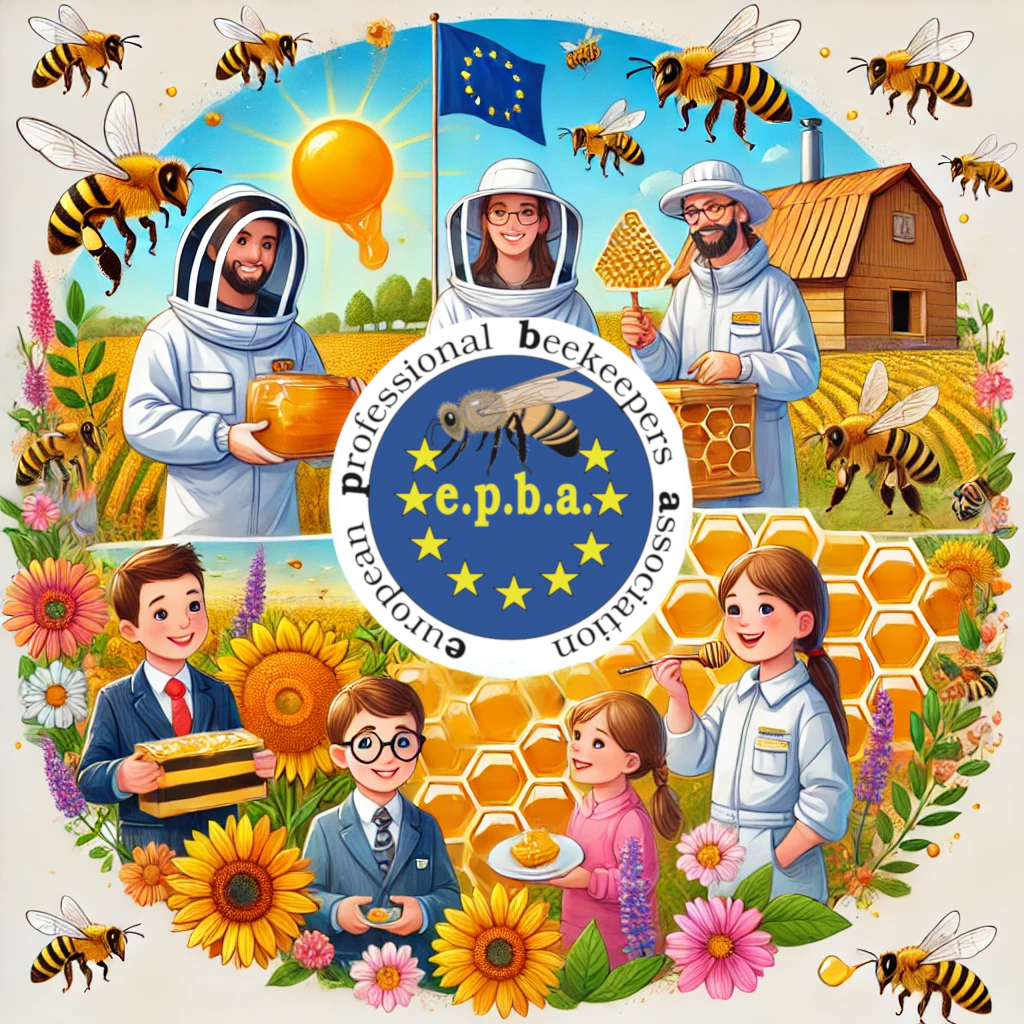Let’s Clean Up The Honey Market
“Fake Honey: The Sweet Illusion”
The groundbreaking documentary “Fake Honey: The Sweet Illusion”, aired on German public TV channel ZDF last week, reached more than 2.4 million live viewers.
It is now available on YouTube — with subtitles in all languages! Help clean up the honey market by sharing this important content.
The ZDF Frontal documentary exposes:
1️⃣ Hidden supply chains and factories producing “lab-proof” fake honey and designer syrups
2️⃣ Weaknesses in honey authenticity tests, which let heavily adulterated products pass as real honey
3️⃣ The massive scale of fraud devastating honest beekeepers and deceiving consumers
📢 Call to Action:
Watch the documentary, share this message, and support transparency in the honey market. Together we can hashtag#CleanUpTheHoneyMarket.
Together Against Fake Honey! 🍯
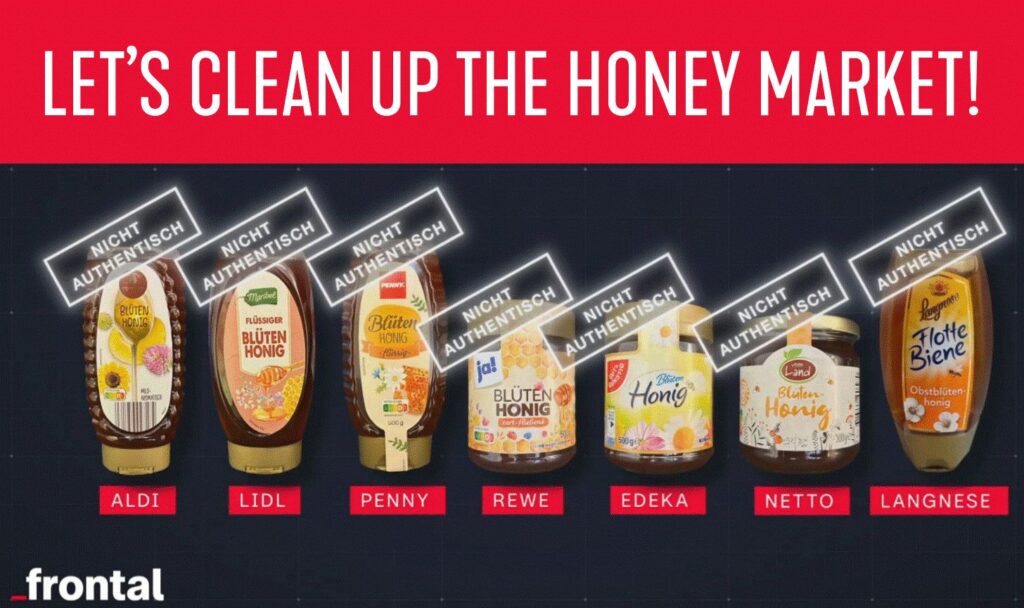
Did you know that a significant portion of the honey offered in supermarkets isn’t real? Studies and tests, including the latest report by ZDF Frontal, reveal alarming results: many products were found to contain adulterated or synthetic honey.
This doesn’t just impact the quality of what we consume—it also heavily affects honest beekeepers who suffer massive losses due to these practices. It’s time to clean up the honey industry and promote genuine, authentic products!
👉 That’s why we’ve launched a donation campaign: Clean Up the Honey Market – Say No to Fake Honey!
With your support, we can:
· Raise awareness about this issue,
· Promote the analysis of honey products,
· Advocate for stricter controls,
· Empower honest producers, and
· Legally pursue honey fraudsters.
Every contribution counts! Together, we can make a difference and ensure that real honey becomes what it should be again: natural, pure, and authentic.
🍯 Donate and learn more here: https://lnkd.in/ddDpnmyS
Thank you for your support! 🙏
ORF channel’s program “Kontakt” revealed the real situation on the honey market in Austria.
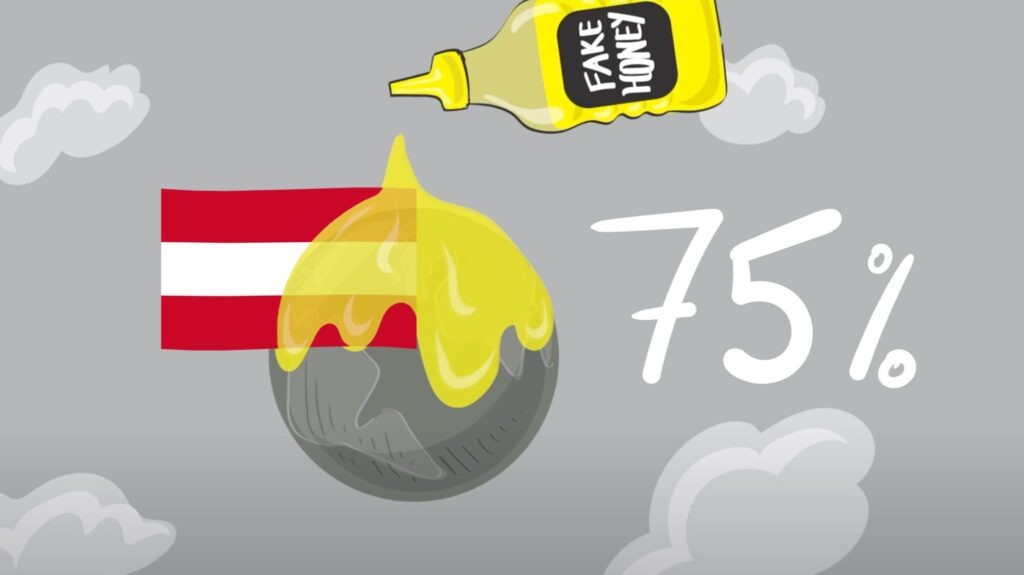
Test Results:
Out of eight samples, only a small portion was accepted as genuine honey, while 23 samples were rejected. The sample collection was conducted under legal supervision.
DNA Laboratory Results:
Independent analyses in the laboratories Celvia (Estonia) and Sinsoma (Austria) led to identical results. The DNA analysis was confirmed as a reliable and scientifically valid method, despite claims that it is “not yet accredited.”
Legal Assessment:
A lawyer disputed the claim about the lack of accreditation and emphasized that DNA tests are legally valid. Honey fraud is considered a crime.
Role of Supermarkets:
Supermarkets are regarded as “victims,” but they must now respond and take responsibility. Initial actions show that SPAR and REWE have already removed suspicious honey products from their selections.
Reactions from Parties:
The company d’Arbo responded poorly to the results. AGES deflects responsibility away from itself.
Beekeepers’ Demands:
Austrian professional beekeepers demand political action and stricter controls. The investigation has confirmed their concerns: the market is flooded with counterfeit honey.
Austrian Honey:
Local Austrian honey passed DNA tests without issues. The quality and authenticity of regional honey have thus been confirmed.
Expert Statement:
Experts in economic forensics highlight that DNA analysis is a well-established and reliable method. They strongly advocate for the use of this technology to combat honey fraud.
👉 👉 👉 Watch the show here: https://lnkd.in/dR7TC7up
Wow SPAR in Austria!

SPAR Österreich has taken responsibility and decided to be part of the solution towards a fair honey market. They communicate clearly and act sustainably.
Thank you, SPAR, for leading the way and showing the direction!
https://lnkd.in/dDb_KqdD
Fraudsters have learned how to pass the currently used tests
The honey market is facing serious challenges, as fraudsters have learned how to pass the currently used tests with products that are either not genuine honey or are mixed with sweeteners. This means that today’s tests can grant certificates of authenticity to products that do not deserve them. Such a situation endangers both honest producers and consumers.
Key market players are aware of what is happening.
🚨It is time for all stakeholders to stop denying reality and take responsibility.
Legally, everything is correct, but the reality… do we really accept this?
The enrichment of a small interest group through fraud must end immediately, as it causes harm to humanity on a global scale.
Martin Linkogel, a representative of QSI (Quality Services International), has prepared a comprehensive presentation addressing the challenges and opportunities in honey authenticity testing. The presentation is available at the following link: https://lnkd.in/dVJyz26j
This presentation also includes a reference to Bruker’s platform, which highlights the broader implications;
🚨 “It is not only sugar syrup. Adulteration can affect health and is a food safety issue as well.” You can find Bruker`s slide in the post’s comments
More information can be found here: https://lnkd.in/dRWSe64J
👉 A short video that says more than lengthy research reports; https://lnkd.in/d_xk-az3
30% is the lowest fake honey percent among tested European countries…
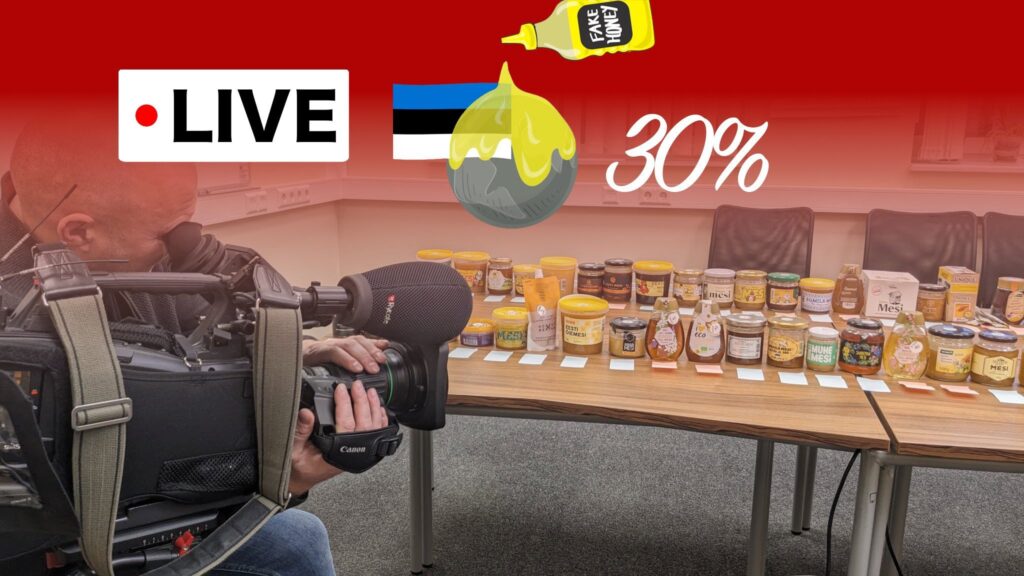
Estonian Professional Beekeepers Association collected 55 honeys from store shelves to verify their authenticity to verify their authenticity. A novel honey DNA test was used, and the sad truth emerged – 30% unfortunately received the result of to be atypical “honey,” meaning they can be considered likely counterfeit.
Do we want to live in a world where clean food is just an illusion, or where we think we are eating something genuine, but in reality, it is not at all what is being promised?
The European Union 𝐫𝐞𝐠𝐮𝐥𝐚𝐭𝐢𝐨𝐧𝐬 𝐜𝐥𝐞𝐚𝐫𝐥𝐲 𝐝𝐞𝐟𝐢𝐧𝐞 𝐰𝐡𝐚𝐭 𝐡𝐨𝐧𝐞𝐲 𝐢𝐬 – and there is nothing to argue about here.
Council Directive 2001/110/EC, Annex 1, point 1 defines it as: “the natural sweet substance produced by Apis mellifera bees from the nectar of plants or from secretions of living parts of plants or excretions of plant-sucking insects on the living parts of plant, which the bees collect, transform by combining with specific substances of their own, deposit, dehydrate, store and leave in honeycombs to ripen and mature.”
𝐒𝐰𝐞𝐞𝐭 𝐧𝐨𝐭𝐡𝐢𝐧𝐠𝐬 — 𝐡𝐨𝐰 𝐒𝐨𝐮𝐭𝐡 𝐀𝐟𝐫𝐢𝐜𝐚𝐧𝐬 𝐚𝐫𝐞 𝐬𝐭𝐮𝐧𝐠 𝐛𝐲 “𝐡𝐨𝐧𝐞𝐲 𝐥𝐚𝐮𝐧𝐝𝐞𝐫𝐢𝐧𝐠”
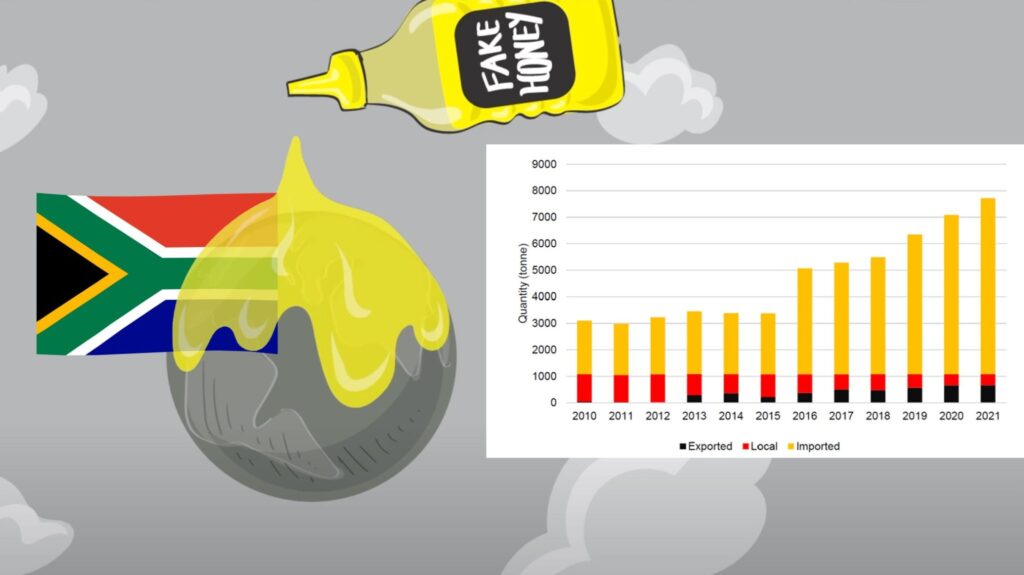
This is yet another example that illustrates the global situation in the honey market.
From the production, import, and export graphs, it is evident how much consumption has increased.
Import and export are completely normal economic phenomena, but unfortunately, in the honey market, fraud is often hidden behind them.
𝐖𝐡𝐢𝐜𝐡 𝐜𝐨𝐮𝐧𝐭𝐫𝐲 𝐰𝐢𝐥𝐥 𝐛𝐞 𝐭𝐡𝐞 𝐧𝐞𝐱𝐭 𝐭𝐨 𝐩𝐫𝐢𝐨𝐫𝐢𝐭𝐢𝐳𝐞 𝐭𝐡𝐞 𝐢𝐬𝐬𝐮𝐞 𝐨𝐟 𝐡𝐨𝐧𝐞𝐲 𝐦𝐚𝐫𝐤𝐞𝐭 𝐚𝐮𝐭𝐡𝐞𝐧𝐭𝐢𝐜𝐢𝐭𝐲?
Read more Daily Maverick https://lnkd.in/dwp3aCdS
Shocking Findings from UK Honey Testing!

Beekeepers across the United Kingdom recently sent honey samples from supermarkets and large retailers for advanced DNA Metagenomic Testing to verify their authenticity.
The results? 96% of the supermarket samples failed.
These failing samples were all imported honeys.
The only sample to pass was a British supermarket honey labeled as being “100% from the UK.”
This raises serious questions about transparency and the quality of honey sold in the UK.
💡 Why it matters: Supporting local beekeepers and demanding transparency in food labeling is critical for consumers and our environment.
What more is needed for proof?
German beekeepers collected 30 jars of honey from stores across Germany and sent them to a lab for testing to determine whether it was actually honey, and the results were shocking, 80% of the samples failed!
Press release from the President of the European Professional Beekeepers Association
https://www.linkedin.com/company/clean-up-the-honey-market
The ugly truth unfolds country by country.

Does anyone dare to predict the volume of fraud uncovered in the EU in tons after the authorities have completed their work?
Fake honey has been a persistent issue in Türkiye, leading the Ministry of Agriculture and Forestry to intensify efforts to curb food fraud.
Recent investigations have revealed more cases of honey adulteration, with brands using deceptive techniques to mimic authentic honey.
In one major operation in Ankara, authorities uncovered 8,150 tons of adulterated products, including honey mixed with glucose and fructose syrups.
Türkiye’s Ministry of Agriculture and Forestry exposed two well-known honey brands, “Abali” and “Balpetek,” for selling fake honey. https://lnkd.in/dA4-FnqP
Honey bulk DNA testing can stop honey laundering
Bernhard Heuvel visited Estonia.
The purpose of the visit is a honey DNA test developed by Estonian scientists. It is believed that the MDA test could be a GAME CHANGER in the global honey market.
Bernhard Heuvel, from the European Professional Beekeepers Association, visited Estonia.
The main focus right now is on detecting fraud, and currently, the honey DNA test is known to be very successful in this 👏, but there is a lot more …
Think for a moment ☝ about how the introduction of DNA revolutionized forensic science…
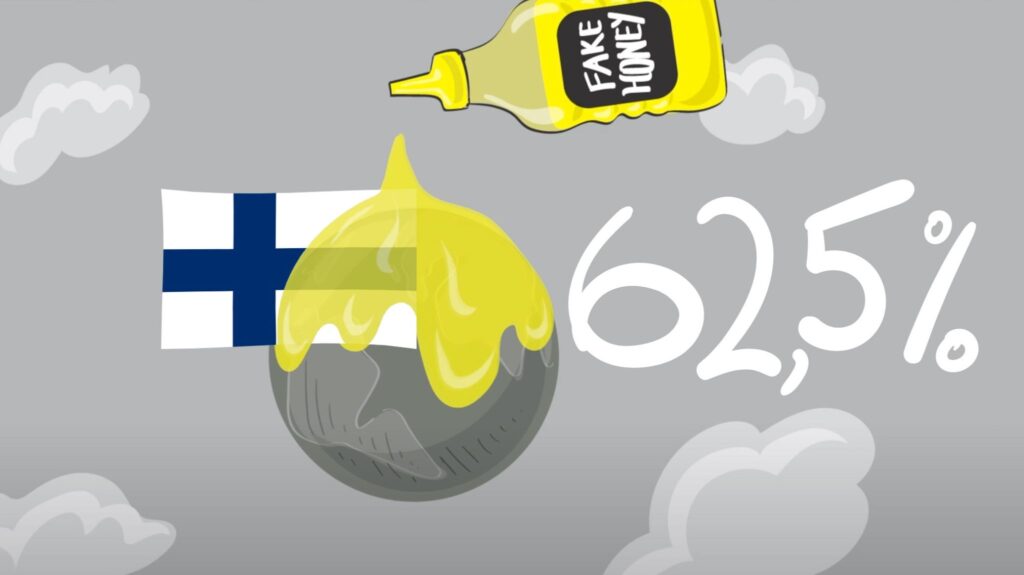
The results are now clear in Finland as well
in August, we collected 56 samples from Finnish retail together with the European Professional Beekeepers Association (EPBA) Bernhard Heuvel.
📍 Result: 62.5% turned out to be atypical “honey,” meaning they can be considered likely counterfeit.
🧬 The honey was tested using the innovative honey DNA test by CELVIA 👍 We are proud of our CELVIA scientists, who have become global pioneers in eliminating honey fraud with this DNA testing!”
More about honey DNA test;
https://lnkd.in/d8QbuX8u
Honey samples from Mexico to DNA testing!
Federico Berron A. Retired CEO of honey exporter 1984-2023,
200,000 MT real honey export experience Beekeeper up to 600 hives since 1999, now my son.
Anti GMO activist 2012 – Today
webpage: www.honeyap.org
Full videointeview with Frederico Berron -> https://youtu.be/8uB09IillgY
What if DNA could reveal the truth about your honey?
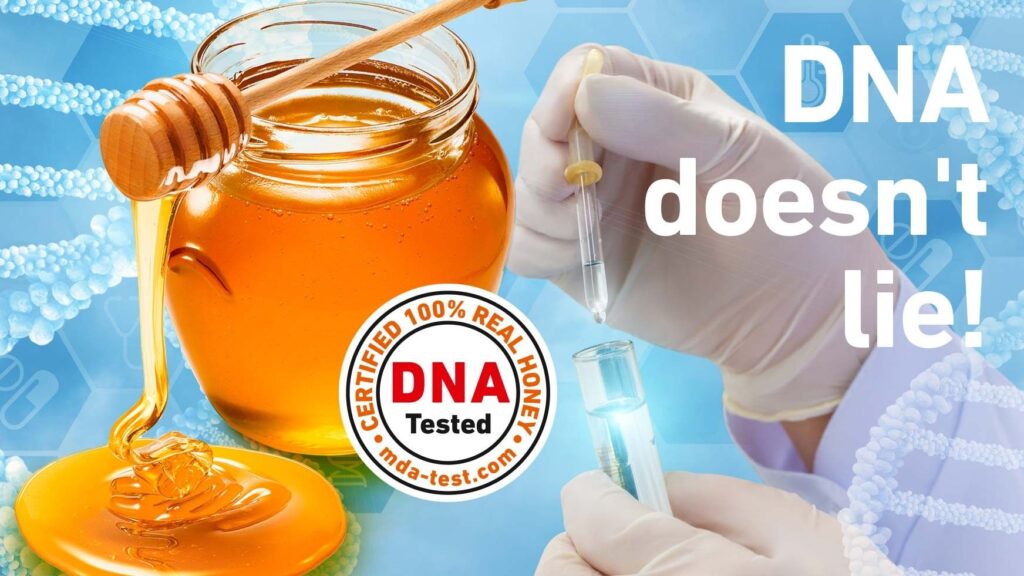
At CELVIA, we use groundbreaking honey metagenomic DNA analysis to uncover what’s really inside.
When new discoveries are made, people are often skeptical. That’s why we, as researchers, want to explain how this works in simple terms.
Let’s break it down in 4 points:
1. The future of food testing
Our Metagenomic DNA Analysis (MDA test) uses the same technology that’s applied in medical research, now adapted for the food industry.
It’s a powerful method that analyzes every DNA sequence found in honey. With this, we create a unique DNA profile for each honey sample.
Authentic honey is complex, and we use advanced machine learning to analyze it. This method will shape food safety for years to come.
2. Global genome reference database
We’ve built a comprehensive database that compares the DNA found in honey samples to a global collection of data.
This includes information from all living species like plants, insects, fungi, mammals and DNA viruses, collected over decades of research. This allows us to analyze honey from anywhere in the world.
3. Authentic and non-authentic honey database
Between 2020-2023, we developed a database of both real and fake honey, funded by public research and coordinated by the Estonian Agricultural Registers and Information Board.
This database contains honey samples from the Baltics and beyond, helping us to accurately determine honey quality
Extracting DNA from real honey is simple for us.
If the honey is pure, the DNA is of high quality. If it’s been tampered with, the DNA tells the story.
Our slogan, “DNA doesn’t lie,” is equally valid in medicine, criminalistics, and food safety.
Curious about the quality of your honey? 🧬
Kaarel Krjutškov PhD CEO
Celvia CC AS
Associate Professor, University of Tartu, Estonia
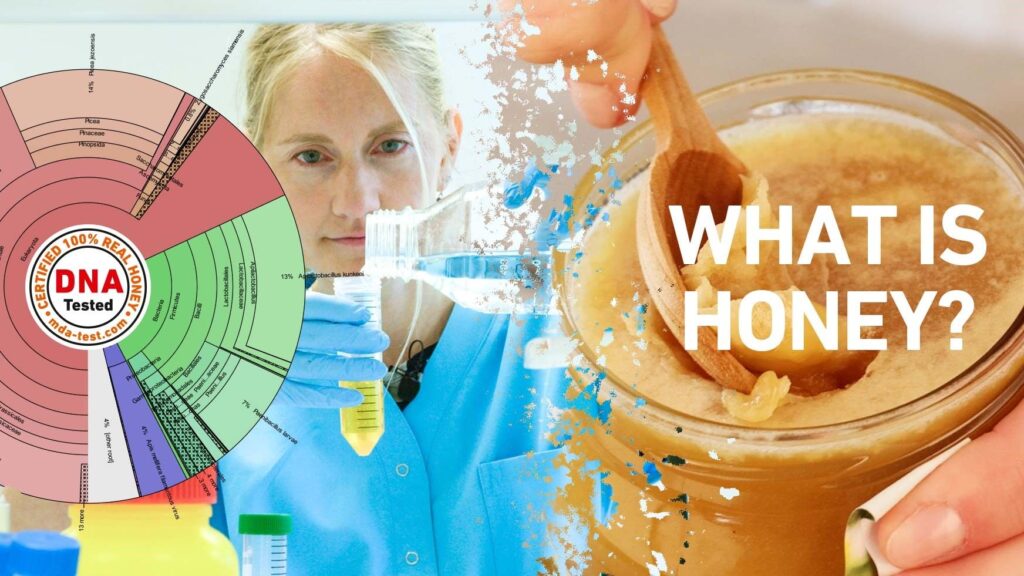
The European Union 𝐫𝐞𝐠𝐮𝐥𝐚𝐭𝐢𝐨𝐧𝐬 𝐜𝐥𝐞𝐚𝐫𝐥𝐲 𝐝𝐞𝐟𝐢𝐧𝐞 𝐰𝐡𝐚𝐭 𝐡𝐨𝐧𝐞𝐲 𝐢𝐬 – and there is nothing to argue about here.
Council Directive 2001/110/EC, Annex 1, point 1 defines it as: “the natural sweet substance produced by Apis mellifera bees from the nectar of plants or from secretions of living parts of plants or excretions of plant-sucking insects on the living parts of plant, which the bees collect, transform by combining with specific substances of their own, deposit, dehydrate, store and leave in honeycombs to ripen and mature.”
Replies from scientists;
𝐓𝐫𝐚𝐧𝐬𝐩𝐚𝐫𝐞𝐧𝐜𝐲
The honey Metagenomic DNA Analysis (MDA) team is in the process of publishing their research in a peer-reviewed journal. The preprint has been available in the bioRxiv database since July 31st, 2024. The link is below. The manuscript describes the honey DNA composition aspect of MDA analysis, leaving authenticity analysis out of scope due to confidential reasons. The MDA team, part of Celvia CC service laboratory, collaborates with authorities and the accreditation center.
𝐃𝐚𝐭𝐚𝐛𝐚𝐬𝐞 𝐚𝐧𝐝 𝐚𝐧𝐚𝐥𝐲𝐬𝐢𝐬
The authentic honey DNA profile database consists of 100% genuine and trackable honey samples from different geographic origins. Honey authenticity analyses apply four machine learning-based models. Botanical composition is only one piece of the puzzle and moderately affects the analysis. The physiology of honeybees and the complex picture of honey DNA profile have high similarities across countries. Authentic honey varies mainly in botanical composition and has minor differences in other organisms, which does not significantly change the honey’s DNA profile. In other words, the authentic honey DNA profile is much more complex than we imagine. That is why it is tamper-proof.
The honey DNA analysis uses a comprehensive reference DNA sequence database, compiled DNA sequences for all different organisms from all publicly available biological databases. In addition, the MDA team has enlarged the database with novel sequences to improve the accuracy of the analysis.
𝐖𝐡𝐲 𝐢𝐭 𝐡𝐚𝐩𝐩𝐞𝐧𝐞𝐝?
It was time because honey bulk DNA analysis has become cost-effective in food market monitoring and as a quality label. It happened and will be that way for a long time, just like forensics and medicine. In other words, DNA analysis is here to stay. It is time to adapt to this knowledge and the capabilities of DNA analysis. The saying “adapt or perish” applies here. As scientists, we are willing to engage in an educational program to introduce this topic to the people involved. The same has happened in forensics and medicine and will happen in food production and supervision.
Link to the original manuscript
https://lnkd.in/dYiDQ66v
Kaarel Krjutskov | PhD CEO | Celvia CC AS | Associate Professor, University of Tartu, Estonia | https://celvia.ee/
What more is needed for proof?
According to investigations, 46% of the collected samples were suspected of being adulterated with added syrups.
Join with us! Add your e-mail to our subscribers list!
Please support the fight against the fraud
The initiator of the project is Estonian Professional Beekeepers Association and the involved party is http://www.professional-beekeepers.eu/
We keep buying honey with good faith, believing it to be the genuine thing, but unfortunately most of the imported honey in shops these days is not real honey. Just this month, The Guardian reported that all the British honey tested in an EU fraud investigation failed an authenticity test. Producers of such fake honey are raking in massive profits while selling unhealthy, fraudulent products. They are doing so in a conscious, systematic, and comprehensive way. These fake honey producers are also pushing real beekeepers out of the market, which has an environmental impact. As Albert Einstein has been quoted as saying, “If the bee disappeared off the face of the Earth, man would only have four years left to live.” And all of this is happening just so that a tiny group of people can make more money. Something has to be done about this situation, and we are working to change it for the better. Who are we? Some beekeepers from Estonia who want to make a difference. But we are branching out and working with marketers, chemists, lawyers, and lobbyists to support more regulation of the honey market, including the creation of laws and unique formulas that will allow us to keep fake honey off of shelves for good. We also want to start a dialogue with governments worldwide to achieve our aims. If you have competency in some level mentioned and are interested in our mission, please get in touch with us. People everywhere are being cheated out of good honey, and beekeepers are losing their livelihoods. And so are the world’s bees, upon whom we all really do depend.
